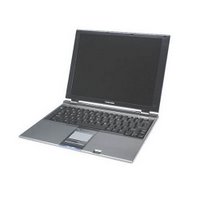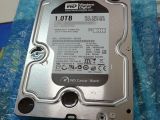Mobo is recommended:
-abit AW9D series (975X)
ASUS P5W-DH series (975X)
-Or LANParty DFI Infinity 975X / G
abit AB9-serie
* ASUS P5B-Deluxe / WiFi-AP (965p)
-Gigabyte 965p-DS3 or DS4 or DQ6
P5B vanilla is not recommended
nForce590/570 Intel Edition is not recommended to follow this procedure
Recommended Cooling
-Scythe Infinity
-Scythe Ninja Plus
-Scythe Mine
-Tuniq Tower 120
-Thermalright Ultra-120 or SI-128 or SI-120
-Noctua NH-U12
-Thermaltake Big Typhoon
-Arctic Cooling Freezer 7 Pro
Zalman CNPS-CNPS9500AT
Zalman CNPS-7700AlCu or 7700Cu
(7 The first cooling core can be up to speed 3.4Ghz with a stable temperature)
The recommended PSU (PSU congenital casing is not recommended unless a recommendation OC)
- Tagan above 450 watts
- Antec above 500 watts
- FSP above 500 watts
- Termaltake above 500 watts, etc.
Use the RAM with the following rates:
DDR2-667-4-4-4-xx (good for ~ 400Mhz)
DDR2-800-5-5-5-xx (good for ~ 410Mhz)
-DDR2-800 4-4-4-xx (good for 500MHz) -\u003e good for E6300/E6400
DDR2-1066-5-5-5-xx (good for 530Mhz)
The purpose of this guide to reach 4GHz (final clockspeed) can be achieved
Before OC memuali first make sure your motherboard BIOS has been updated with the latest BIOS
1. Disable 'AI Tuning' for ASUS, 'CIA2' for Gigabyte
2. Set PCI Express (PCIe) frequency @ 100MHz ( 'Auto' for DS3/DS4/DQ6)
3. Set PCI frequency @ 33MHz
4. Disable Hyperpath 3 (for P5W DH only)
5. Disable any 'spread spectrum'
6. Disable Q-Fan (for ASUS only)
7. Disable 'Limit CPUID Max to 3'
8. Disable all Overvoltage protection
9. Disable 'C1E'
10. Disable 'EIST'
11. Disable Virtualization Technology
12. Disable No-Execute Memory Protect
13. Disable any other thing you do not use
14. Do not enable all the speed enhancements that looks
Settings Memory
For Gigabyte BIOS under 'MIT' press CTRL F1
Gigabyte: Set 'Memory Multiplier' to 2 (1FSB: 1RAM operational)
ASUS: Set 'DRAM Frequency' to DDR2-533 @ 266MHz FSB (1FSB: 1RAM operational)
When increasing the FSB, RAM will follow the 1:1 ratio seen in the BIOS.
1. Set 'DRAM Timing' to manual or disable SPD (SPD used for P5W DH)
2. The BIOS can be seen in figure 4 separate timing, replace it with your RAM specifications used
example. 4-4-4-12
CAS # Latency (TCL)
RAS # to CAS # Delay (tRCD)
RAS # Precharge (TRP)
RAS # Precharge Delay or switch to Precharge (tRAS)
When 1FSB: 1RAM overclock on the RAM frequency to use value
Timing: 5-5-5-15
vDIMM: 2.2V
Examples of DDR2-667 4-4-4-12 ~ 1.9V operating at 400Mhz should be set at 5-5-5-15 2.2V
3. Let the other timing in a position "auto" or the default settings
Voltage
1. Set DRAM / DIMM Voltage (vDIMM) to 2.1V or 2.2V if the specification of RAM (0.3V or 0.4V)
2. Set MCH Voltage (vMCH) to 1.55V
3. Set FSB Voltage (vFSB) to 1.40V
4. Raise SB Voltage (vICH) stages of 0.1V from the default value
5. Set CPU Voltage (vCore) for Speaker:
E6300 = 1.370V E6400 = 1.375V E6600 = 1.400V E6700 = 1.400V X6800 = 1.400V
Frequency Control
1. Set CPU Host Clock / Frequency (FSB) to 333MHz (300Mhz for X6800)
2. Set CPU Clock Multiplier Ratio or processor to the default position
E6300-\u003e 333x7 = 2331
E6400-\u003e 333x8 = 2664
E6600-\u003e 333x9 = 2997
E6700-\u003e 333x10 = 3330
X6800-\u003e 310x11 = 3410
3. Save settings and restart
The next stage (if you want higher clock speed)
1. Raise FSB 5MHz step by step or 2Mhz
2. Calculate the speed core values
3. Raise vCore if necessary in stages of 0.025V
Test Stabilitasi
Requires the program include:
- CPU-Z
- Everest
- PC Mark
- Prime95
- Memtest86
- Core Temp
- SpeedFan etc.
If the system can not boot back into the BIOS default
ASUS Bios to use the 602 version.
BIOS Settings for ASUS:
Advanced
CPU Frequency: 333MHz
DRAM Frequency: DDR2-667
PCI Express Frequency: 101
PCI Clock Synchronization mode: 33.33Mhz
Spread spectrum: Disabled
VDIMM: 2.15V
Vcore 1.375V (Bios report 1.304-1.3012, CPUz reports 1.075V on idle, raises on load to 1.272V, 0.1V near to Vdroop)
FSB Termination Voltage: Auto
NB VCore: Auto
SB VCore (SATA, PCIE): AUTO
ICH Chipset Voltage: Auto
CPU
CPU TM Function: Enabled
Determine by speed: Disabled
Ram timings: 5-5-5-12-6-35-10-10-10-10
So FIRST! IF ANY PLEASE EXCUSE THE LACK OF HELP HELP!















